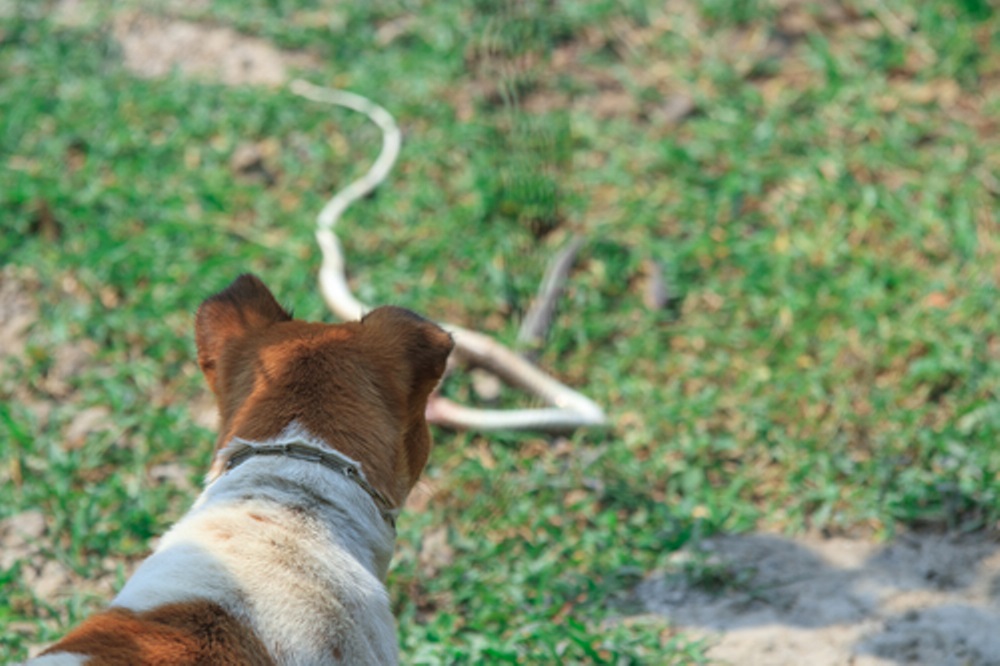Snake Season; what to do if a snake bites your pet

It is now summer, which means beach days, ice cream, and snake season. With perfect conditions and 10 of the deadliest snakes in the world, summertime in Australia is a time for caution when it comes to your furry pet friends. Even with proper supervision, though, it’s still possible that your dog or cat will encounter a snake, and potentially get bitten. The most important thing you can do is know and recognise the symptoms of a snake bite, which will help get them to the vet’s clinic as soon as possible.
What to look out for
The symptoms of a snake bite in a dog or cat can include:
- lethargy
- paralysis
- collapse, which can be followed by recovery
- sudden unsteadiness or weakness
- tremors and shaking
- bleeding from the mouth, nose, or site of the bite
- loss of bladder and bowel control
- dark, discoloured urine, which can be bloody.
Any of these symptoms, without knowing their possible cause, are worth a trip to the veterinarian clinic. If you do know that your pet was bitten, call ahead to your vet as not all clinics stock antivenom. Being able to identify the snake is also helpful, but ensure that you don’t put yourself in danger by attempting to touch, grab, or go near it.
What to do if your pet is bitten
Most importantly, you need to stay calm. You also need to keep your pet calm, and not overexcite them, as with adrenaline, the venom can run through your pet’s system more quickly, speeding up the effects of the poison.
After you and your pet are a safe distance from the snake, call up your nearest vet. Not all clinics carry antivenoms, so you need to check that they do and if not, they will direct you to the nearest clinic that does have them.
Don’t waste any time by trying to perform first aid such as applying a tourniquet, as it can cause irreparable damage to your pet’s nerves and lead to amputation. Don’t try to suck out the venom yourself, either, as the venom can and will enter even the smallest open wound in your mouth.
The best thing to do is to get them to emergency care as quickly as possible.
The issues with identification
With such small, razor-sharp teeth, the only mark left behind is commonly two, tiny pricks, often hidden by fur. The bite site may not even bruise or redden, leaving a potentially life-threatening injury all but hidden. This is why knowing and recognising the symptoms are so important.
Moreover, even an experienced veterinarian could find it hard to tell if a pet has been bitten, as sometimes symptoms won’t present themselves for up to a day after.
If your dog is off-leash or you allow your cat to go outside, it’s best to keep an eye on them as the weather heats up. If you see them excited and playing with something, it could very well be a snake. They might collapse suddenly, but get up straightaway, which should be a sign to call your vet, as there’s a high chance that they’ve been bitten.
At the end of the day, the presence of snakes in the hotter months are an unfortunate risk in Australia. Even with vigilance and care, our furry friends can still get hurt. That’s why being prepared for an emergency like a snake bite is so important, and the most helpful way to make sure your pet stays safe.